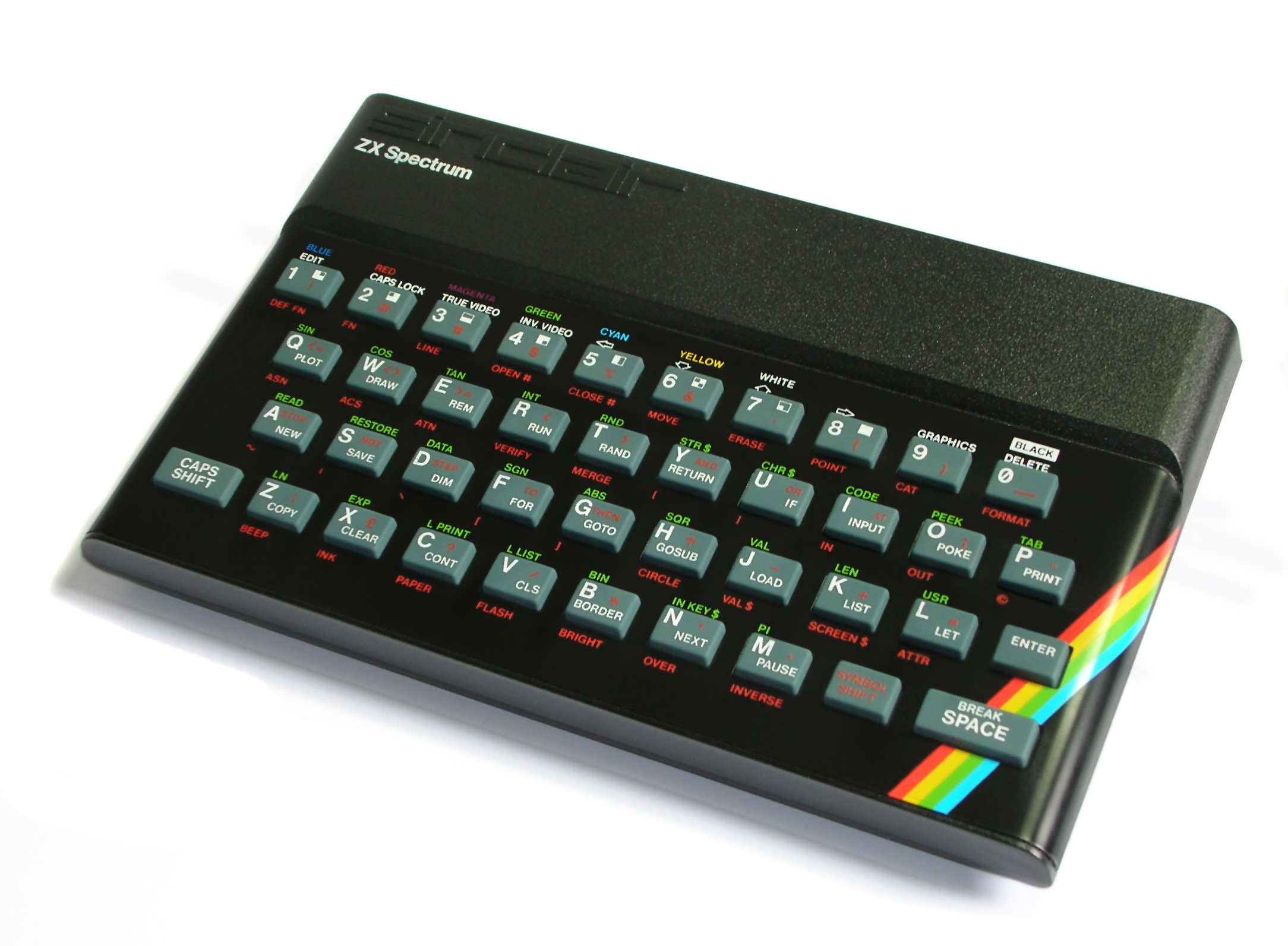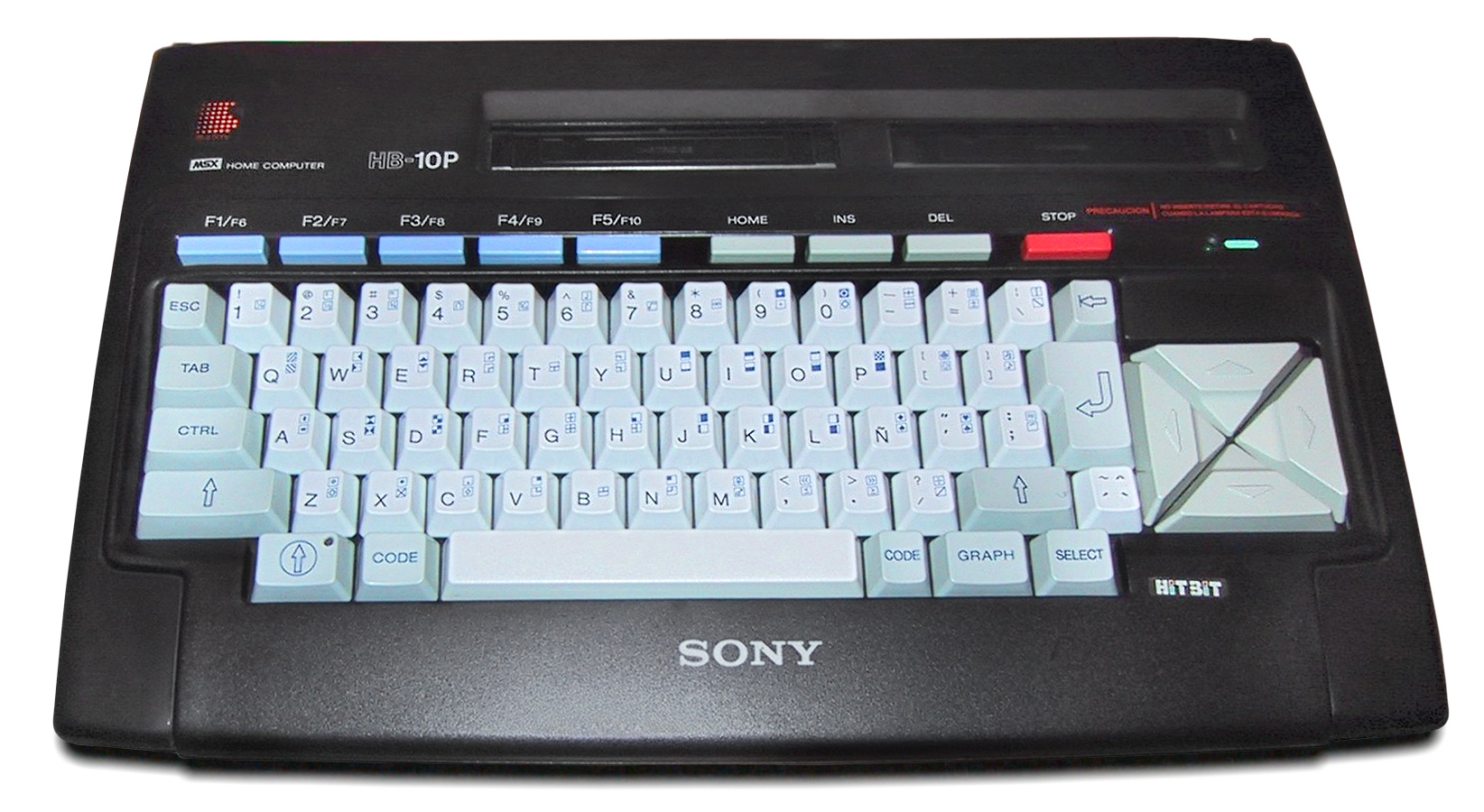This post tries to give an overview of home computers during the 1980s decade, focusing on 8-bit home computers.
Overview of early Home Computers
Home computers emerged in the late 1970s. They were microcomputers aimed for the home market, in opposition to the company or public market, that were the only that could afford computers until then.
In the early 21st century we are used to have a standardized home computer type dominating the market: the PC (Personal Computer) compatibles, built by any manufacturer. However, the reality was much more complex in the late 70s and 80s.
During this time period there were different 8-bit and 16-bit home computers present in the market, where each manufacturer had a different product whose hardware and software were not compatible with the others. In addition, the capabilities (memory size, display, graphics card, etc.) were very different from one product to another.
The effort to port an application to one home computer to another was considerable. But in order to reach the broadest audience, developers needed to do some work to make their software available on different platforms.
Gaming on early Home Computers
One of the uses of home computers in the 1980s was video games. If you were interested in gaming, you had the same options as you still have in the 2020s: you could buy a dedicated device for playing video games, known as video game console, or you could buy a multi-purpose home computer and load games on it.
The 8-bit home computers coexisted with the third generation of game consoles (represented by the NES and Sega Master System, among others), also know as the 8-bit era.
BASIC was the de facto programming language standard for the home computers of the 8-bit era.
As processor, display, color palette, resolution or computing capabilities were different from one home computer model to another, graphics needed to be adapted to each of the existing and were visibly different.
IBM PC was a successful home computer that was manufactured by American company IBM. Its main drawback was its price, that was prohibitive for most domestic economies, though it was superior in capabilities. IBM PC would finally become a home computer standard with the irruption of 100% PC compatibles or PC clones, that is what we currently know as PC.
PC clones were computers manufactured by companies different than IBM that mimicked the behavior of IBM PC, offering a home computer that was compatible with software designed for IBM PC but at a considerable lower price. PC clones would become an standard and eventually end the existence of a fragmented market of home computers whose hardware and software were not compatible among the different products.
Nevertheless, the software incompatibility would still persist due to the existence of different operating systems (MS-DOS, Windows, Unix/Linux or macOS, among others) and coding standards.
List of 8-bit Video Game Home Computers
Main 8-bit home computers that dominated the 80s market:
- Apple II
- ZX80
- ZX81
- Commodore 64 (C64)
- ZX Spectrum
- Dragon 32/64
- Oric
- MSX
- Amstrad CPC
- Amstrad PWC
The most popular were C64, ZX Spectrum, MSX and Amstrad CPC.
Apple II
Apple II was first released in 1978.
ZX80
ZX80 was manufactured by Sinclair. It was released on 1980-02-29.
Its successor was ZX81.
ZX81
ZX81 was manufactured by Sinclair. It was released on 1981-03-05.
It successor was the ZX Spectrum.
Commodore 64
Commodore 64 was also known as C64, was released in January 1982. It was developed by American company Commodore.

It was the successor of the also 8-bit VIC-20 home computer.
ZX Spectrum
ZX Spectrum was released in April 1982. It was developed by British company Sinclair.
There were six different models of ZX Spectrum. The entry level model had a 16K RAM. ZX Spectrum 128 was called like this because of its 128K RAM.

It was preceded by ZX81, that had 1K RAM. ZX Spectrum received its name because, unlike its monochrome predecessors ZX80 and ZX81, it was able to display up to 8 colours. The Z80 processor, manufactured by the American company Zilog, was common to all these products.
Video games were programmed in BASIC or assembly language.
The programs were loaded into the main memory using regular cassette tapes as default.
Alternatively, data could read from what was called a ZX Microdrive device, that read and wrote information from microdrive cartridges, technologically similar to cassette tapes but smaller. This data storage system was faster than regular cassettes, but still slower and less reliable than floppy disks.

A third memory storage method were the 3-inch floppy disks, that were featured on the model ZX Spectrum +3.
Though the ZX Spectrum was inferior in gaming capabilities to C64, its lower price, existing legacy of ZX video games and broader game catalogue made it a popular choice.
It was succeeded by 32-bit Sinclair QL (Quantum Leap) in 1984. A commercial failure, it was the last home computer developed by Sinclair before the brand and products acquisition by Amstrad. The Sinclair brand will be still used for other Amstrad models.
You can read this dedicated post about ZX Spectrum.
Dragon 32/64
Dragon 32 and Dragon 64 were home computers developed by Welsh company Dragon Data. Dragon 32 was released in August 1982.

This home computer was not as popular for gaming as the others, but it was a choice.
Oric
Oric was a family home computer by British company Tangerine.
Oric-1 was released in September 1982.

This home computer was not as popular for gaming as the others, but it was a choice.
MSX
MSX was released in 1983. It was developed by American company Microsoft and Japanese company ASCII Corporation.

It was specially popular in Japan.
Amstrad CPC
Amstrad CPC (Colour Personal Computer), often just referred as Amstrad, is a family of home computers released in 1984. It was released by British company Amstrad.
There were 6 different models for Amstrad CPC. The entry-level one was CPC464. There were other models like CPC6128.

It loaded data from either a compact cassette deck or 3-inch floppy disk drive, depending on the model.
You can read a full post about Amstrad CPC.
Amstrad PCW
Amstrad PCW, sometimes just referred as PCW, was a family of home computers released on 1985. It was released by British company Amstrad.
It is probably the latest popular 8-bit home computer.
List of 16-bit Home Computers that coexisted with 8-bit
There were some 16-bit home computers that coexisted with the commercial peak of 8-bit home computers
Many 8-bit games for home computers were ported to the exiting 16-bit alternatives. Because of these reasons, they also worth a mention in this post.
The featured 16-bit home computers that coexisted with 8-bit:
- IBM PC and compatibles
- Atari ST
- Amiga
IBM PC and compatibles
IBM Personal Computer (PC), commonly known as PC, was released in 1981. It was developed by American company IBM.

Its high price, more easily afforded by companies than homes, made that initial video game players opted for the other 8-bit home computers referred on this post.
The arrival of PC compatibles would drop the prices, making it more affordable, and finally PC became the standard for home computers.
Compaq Portable was a PC compatible by Compaq.
The first mostly PC compatible from Amstrad was Amstrad PC1512, often just called PC1512. It was first manufactured in 1986.

You can read this post about IBM PC.
Atari ST
Atari ST, sometimes referred as ST, was released in 1985. It was manufactured by the Japanese company Atari.

You can read this post about Atari ST.
You can read this post about Atari ST.
Amiga
Amiga was released in 1985. It was manufactured by the American company Commodore.

It was the successor of C64.
You can read this post about Amiga.
You might also be interested in…
External references
- Jesús Martínez del Val “JMV”; “La historia de Dinamic“; GamePress, 2021 (Spanish)
- Richard Leadbetter; “Face-Off: ZX Spectrum vs. Commodore 64“; Eurogamer, 2012-04-29
[…] 8-bit Video Game Home Computers […]
[…] 8-bit Video Game Home Computers […]